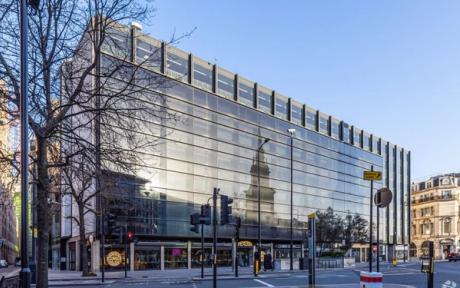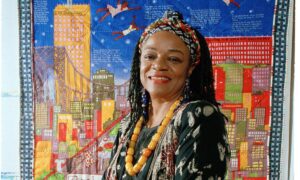
On 26 October, 103 artists working in 90 artist studios will be asked to vacate their premises at 47 Mark Lane in London, a central location near Tower Bridge.V.O Curations, a non-profit arts organisation that provides low-cost studio spaces to artists, had signed a two-year lease for the building, which included a 15-month break clause that the property owners have now enforced. “We work within these meanwhile spaces,” explains Nnamdi Obiekwe, one of the co-founders of V.O curations. “[We rent space] in buildings before they are going to be redeveloped or, in some instances, demolished.” The artists at 47 Mark Lane were given two months’ notice of the move-out date. Founded in 2018, V.O Curations usually transitions its artists from one building to another when a lease comes to an end. In this instance, a new location in Clerkenwell the organisation was hoping to lease had fallen through. Zina Vieille, V.O Curations’ other co-founder, says, “The average time that an artist spends with us is three leases. So across the 700 artists that we’ve supported these past years, we’ve moved them across three buildings.”Most of the people who rent studio spaces from V.O Curations are emerging artists in the first five years of their career. An exception is the established artist Ed Fornieles, who says he had been renting his studio through V.O Curations for around two years. Fornieles was able to secure a space at the organisation’s only other current location at 56 Conduit Street in Mayfair. “I’ve been in several properties, and they normally only last a year. So anything above a year is kind of great,” he says.Prices for studios at 47 Mark Lane started at £150 pounds a month. Emily Dixie Hill, a painter who rented a windowless space the size of a small walk-in closet, was paying around £200 a month. “The thing about V.O that was so amazing, and that I think is a shame to lose, is that they ran crits [artist critiques] every month. [Mara-Johanna Kolmel], the head curator at V.O, would run them, and she’s curated so many shows–she’s so knowledgeable,” Hill says.The artist Sean Rohr rented a classroom-sized space with windows that let in ample natural light. The central location was a valuable asset as well, Rohr says, as he often invites people to be sketched on-site at his studio. He has not yet been able to find a new studio, and his primary concern now is finding somewhere to store his work and art supplies in the meantime. “I do expect to be selling smaller works over the next couple of months even if I don’t have a studio,” he says. “The question is, where do I store them? Where do I organise them and handle the logistics of getting them sent out to collectors?”The painter Harry Rüdham has been with V.O Curations since graduating from Central Saint Martins five years ago, and he feels lucky that he entered a Master’s programme around the time when the eviction notice was sent out. “V.O has the cheapest and most-centrally located studio space,” he says. “Everyone has a studio that actually locks. Before I came here I was looking at a space in Covent Garden that was open-plan. They do that to save money, but I’ve heard of people nicking laptops, tools, even artwork in open-plan spaces.”Vieille and Obiekwe say that around 80% of the artists being evicted have been able to find alternative studio spaces on their own, with many sharing their new spaces with other artists they met at 47 Mark Lane.V.O Curations’ goal is now to procure funding and to work alongside local councils to establish a more permanent space within certain boroughs. “We hope to have longer-term leases in place for artists by March 2024,” the co-founders say. “It’s our plan to be able to rent spaces for at least three years, hopefully more.”


























